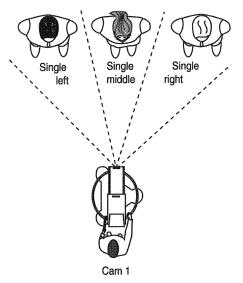Rehearsals
Rehearsals should not be for the performers’ benefit. They should have practised in rehearsal rooms – or any room frankly – without you paying the hourly rate for an entire studio crew and facility.
This will be the first time the crew have seen the production. They deserve the time to rehearse their own contribution to the programme, and if your plan doesn’t work, you need time to work out another option and to rehearse that as well.
Get started
More time is lost at the beginning of a studio day than at any other period. You must get to the studio on time. If you fail to turn up, within a few days the rest of the crew won’t bother being prompt, and you will never get the production completed on budget.
At the allotted time, sit down in front of your microphone and introduce yourself. You should already have met all the senior crew members, but the others may never have heard of you before. Say who you are and what programme you are doing.
Run a talkback check
Ask in turn if the floor manager, sound supervisor, graphics, VT and cameras can hear you. Cameras will reply by nodding up and down, if anyone doesn’t respond, first find out if they are there. If not, get someone to find them (often the job of the technical co-ordinator), or get their headsets replaced if that is the cause of the problem.
Studio schedule
You should have distributed a proper plan of everything you are going to do that day in the studio. Be aware if you are wandering off the plan, it is hard to recover lost time later in the day.
Try out the plan
You will have prepared camera cards and a shooting script for most productions. This should form the bulk of the final programme, and while it is possible to make as many changes as you like, the more changes you make the less time you will have to rehearse and the messier everyone’s scripts and shooting cards become.
Breaks and finishing
Crew meal breaks should begin and finish on time, and it’s your fault if they don’t. Many studios now impose massive financial penalties for production teams that overrun. It is no longer acceptable for directors to flounce around saying it was for artistic reasons – if the schedule was reasonable you should have achieved it.

If you have a camera covering a number of people your instructions have to be clear and unambiguous. Using terms ‘Single, left/middle/right’ make It obvious which person you want on shot.
During rehearsals you must run through the terms and conventions you intend to use.

Similarly if you have a group of three do not call for a 2-shot without specifiying which.
1. You will be given the wrong one.
2. The crew will think you are stupid.
Call for a ‘2-shot left’ or ‘2-shot right’.
